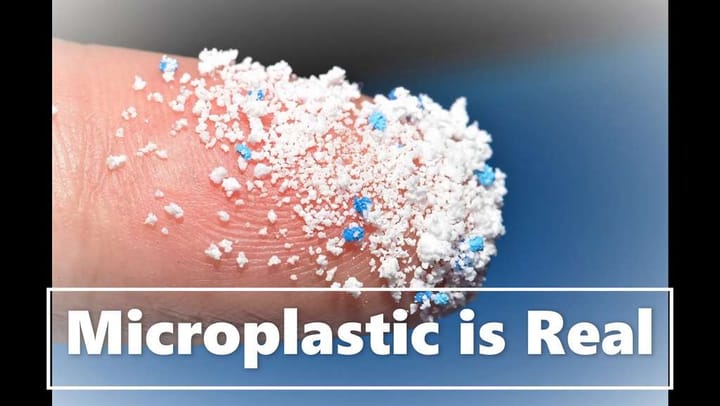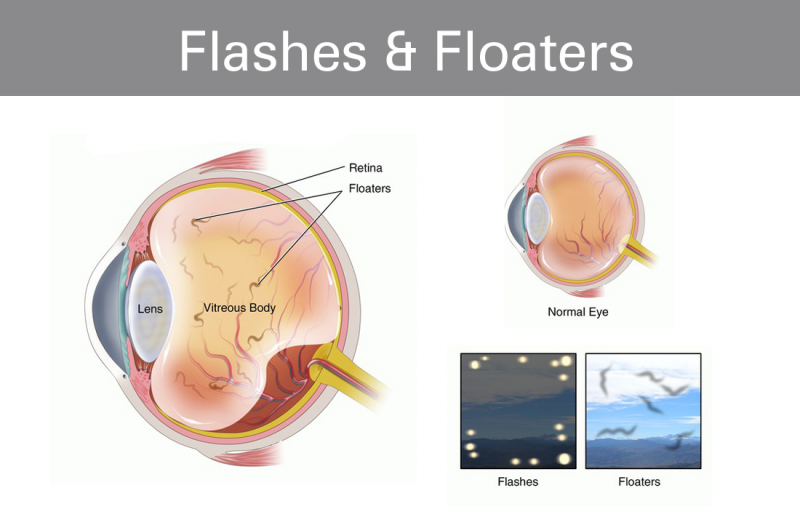The Hidden Dangers of Perfumes - How Phthalates Affect Sperm Count and Male Fertility

The Alluring yet Hidden Risks of Perfumes
Perfumes and fragrances have been used for centuries to evoke emotions and sensations, from the romantic scents of roses to the invigorating aromas of citrus. However, recent studies reveal that certain chemicals in perfumes, particularly phthalates, pose significant health risks that warrant attention and concern.
The Unseen Dangers of Phthalates
Phthalates are a group of synthetic chemicals commonly used in perfumes, fragrances, and personal care products to enhance scent retention and stability. Unfortunately, these same chemicals have been identified as endocrine disruptors, which means they can interfere with hormone function and potentially harm reproductive health.
The Impact on Male Fertility
Research has specifically linked phthalate exposure to decreased sperm count and altered sperm quality in men. This is particularly alarming given the already declining sperm counts globally. Studies have shown that phthalates can:
- Disrupt testosterone levels, essential for sperm production
- Alter sperm morphology, affecting fertility
- Interfere with embryonic development
The Broader Health Implications
The risks associated with phthalates extend beyond male fertility. Exposure has also been linked to:
- Birth defects and developmental issues
- Reproductive cancers
- Neurological and behavioral problems
Reducing Exposure and Mitigating Risks
To minimize the risks associated with phthalates in perfumes:
- Choose phthalate-free or natural fragrances
- Opt for essential oil-based products
- Read product labels carefully
- Support policy changes promoting safer chemicals
As we continue to uncover the hidden dangers of perfumes, it's essential to consider the long-term consequences of our choices. By making informed decisions and advocating for safer products, we can protect our health and the health of future generations.
The Link Between Phthalates and Sperm Count Phthalates, a group of synthetic chemicals commonly found in perfumes, cosmetics, and personal care products, have been linked to alarming consequences for male fertility. Research has unveiled disturbing connections between phthalate exposure and declining sperm count, sparking concerns about the reproductive health of individuals and future generations. Decreased Sperm Count and Quality Research suggests that exposure to phthalates can decrease sperm count and quality. Studies have consistently shown that men exposed to higher levels of phthalates tend to have lower sperm counts, compromised sperm morphology, and reduced fertility potential. Associations with Reduced Semen Quality Studies have found associations between phthalate exposure and reduced semen quality, decreased sperm motility, and increased sperm DNA damage. These findings indicate that phthalates can impair sperm function and integrity, making it more challenging for men to conceive. Mechanisms of Phthalate-Induced Reproductive Harm The mechanisms behind phthalate-induced reproductive harm involve disruption of hormone regulation and oxidative stress. Phthalates can mimic or interfere with hormones, particularly testosterone and estrogen, crucial for sperm development and maturation. Additionally, phthalates can induce oxidative stress, damaging sperm cells and compromising fertility. Key Findings and Implications Reduced sperm count: Phthalate exposure has been linked to decreased sperm concentration and total sperm count. Decreased sperm motility: Phthalates can impair sperm movement, reducing the chances of successful fertilization. Increased sperm DNA damage: Phthalate exposure can lead to genetic damage, potentially affecting offspring health. Hormone disruption: Phthalates can disrupt hormone balance, critical for reproductive health. Protecting Male Fertility To minimize exposure to phthalates and safeguard male fertility: Choose phthalate-free products: Opt for perfumes, cosmetics, and personal care products labeled as phthalate-free. Use alternative fragrances: Select natural fragrances or essential oils instead of synthetic perfumes. Reduce product usage: Limit use of personal care products to minimize phthalate exposure. Conclusion The link between phthalates and sperm count is a pressing concern for male fertility and reproductive health. By understanding the risks and taking proactive steps to minimize exposure, individuals can protect their fertility and contribute to a healthier future.
Phthalates in Perfumes: A Widespread Concern
Phthalates, a group of synthetic chemicals, have become a ubiquitous presence in modern life, particularly in personal care products like perfumes. The alarming truth is that these chemicals pose a significant threat to male fertility, specifically sperm count. In this section, we will delve into the world of phthalates in perfumes, exploring their prevalence, exposure pathways, and cumulative effects.
The Prevalence of Phthalates in Perfumes
Diethyl phthalate (DEP) is a common phthalate used in fragrances and perfumes. It serves as a solvent, helping to dissolve fragrance ingredients and extend the scent's duration. However, its widespread use raises concerns about human exposure and potential health risks. Studies have shown that DEP is detectable in the majority of perfumes and fragrances on the market.
Perfume Use: A Significant Exposure Pathway
Research indicates that perfume use has been identified as a significant exposure pathway to phthalates. When applied to the skin, phthalates can be absorbed directly into the bloodstream, bypassing traditional detoxification pathways. This direct exposure route raises concerns about the accumulation of phthalates in the body and their potential impact on reproductive health.
Cumulative Exposure: A Cause for Concern
The widespread use of phthalates in consumer products, including perfumes, contributes to cumulative exposure. This accumulation occurs when individuals are exposed to multiple sources of phthalates throughout their daily lives, such as:
- Personal care products (perfumes, fragrances, cosmetics)
- Household cleaning products
- Packaging materials
- Food containers
This cumulative exposure amplifies the potential health risks associated with phthalates, particularly in regards to sperm count and male fertility.
In conclusion, the presence of phthalates in perfumes poses a significant concern for male fertility. As consumers become increasingly aware of these hidden dangers, it is essential to explore alternative, phthalate-free fragrance options and advocate for stricter regulations on the use of these chemicals in consumer products.
Reducing Exposure to Phthalates in Perfumes
While the dangers of phthalates in perfumes may seem alarming, there are steps you can take to minimize your exposure and protect your health.
Practical Strategies for a Phthalate-Free Lifestyle
To reduce the risks associated with phthalates in perfumes, consider the following simple yet effective measures: 1. Choose Phthalate-Free Perfumes and Fragrances When shopping for perfumes or fragrances, carefully read the ingredient labels and look for certifications like "phthalate-free" or "non-toxic." Opt for brands that prioritize consumer health and transparency. Some reputable brands voluntarily disclose their ingredients and avoid using harmful chemicals. 2. Opt for Natural, Essential Oil-Based Alternatives Natural, essential oil-based perfumes and fragrances offer a safer and healthier alternative to synthetic phthalate-laden products. Essential oils derived from plants, flowers, and herbs provide unique fragrances without the risks associated with phthalates. 3. Limit Perfume Use and Avoid Applying Fragrances Directly to Skin Even if you cannot completely eliminate perfume use, reducing the frequency and amount applied can help minimize exposure. Spray perfumes on clothing or fabrics instead of directly on skin to reduce absorption.
Additional Tips for a Healthier Fragrance Routine
Check product labels for ambiguous terms like "fragrance" or "parfum," which may indicate phthalate presence. Support policy changes and advocacy efforts pushing for stricter regulations on phthalate use in consumer products. Educate friends and family about the potential dangers of phthalates in perfumes. By adopting these simple strategies, you can significantly reduce your exposure to phthalates in perfumes and contribute to a healthier lifestyle.
Conclusion: A Call to Action
The alarming connection between phthalates in perfumes and declining sperm count, as well as male fertility issues, necessitates immediate attention and proactive measures. As we conclude our exploration of this critical issue, it is essential to emphasize the imperative for collective action.
The Need for Vigilance and Change
The potential risks of phthalates in perfumes warrant attention and action. These chemicals, ubiquitous in fragrances and personal care products, pose a significant threat to reproductive health. It is crucial to recognize the severity of this issue and work towards mitigating its impacts.
Empowering Consumers, Demanding Transparency
Consumers should prioritize phthalate-free products and demand greater transparency from manufacturers. By making informed choices and advocating for safer, healthier alternatives, individuals can significantly reduce exposure to harmful phthalates. This grassroots movement can drive meaningful change in the industry.
The Path Forward: Research and Awareness
Further research is necessary to fully understand the reproductive health impacts of phthalate exposure. Scientists, policymakers, and health organizations must collaborate to investigate the extent of phthalate effects and develop evidence-based guidelines. Raising awareness about the risks associated with phthalates will inspire a cultural shift towards safer, more sustainable practices.
Taking Action Today
To safeguard male fertility and overall well-being, consider the following steps: Choose phthalate-free perfumes, fragrances, and personal care products. Support manufacturers committed to transparency and safe ingredients. Advocate for stricter regulations on phthalate use in consumer products. Engage in informed discussions about chemical safety and reproductive health. By acknowledging the hidden dangers of phthalates in perfumes and taking proactive steps, we can mitigate the risks and foster a healthier environment for future generations.









Comments ()